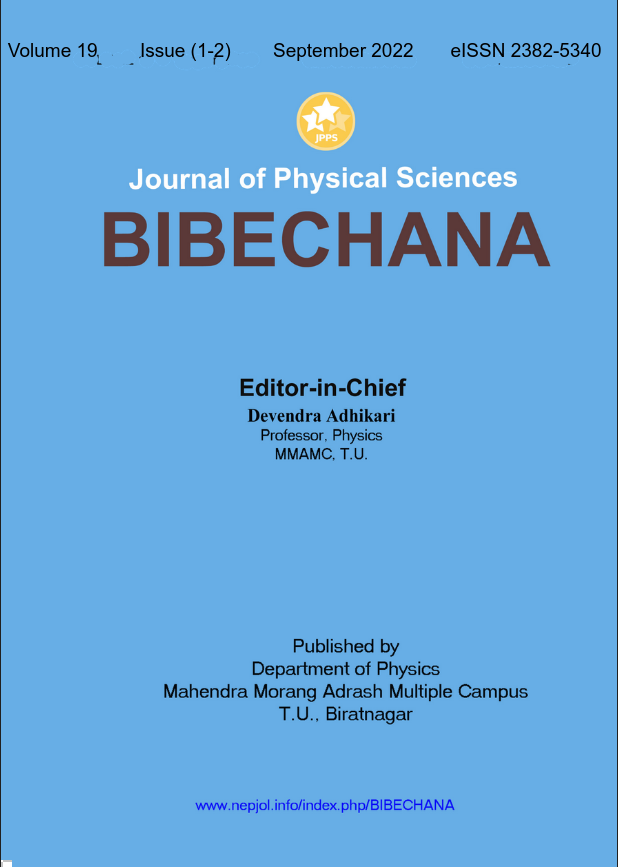A mixed-mode ginger and turmeric solar dryer: design, simulation, biochemical and performance analysis
DOI:
https://doi.org/10.3126/bibechana.v19i1-2.46386Keywords:
Mixed-mode solar dryer, Ginger, Turmeric, Drying Efficiency, Biochemical analysisAbstract
Postharvest loss of vegetables and fruits is higher in developing countries due to the lack of post-processing equipment. Although the production of ginger and turmeric is high in Nepal, farmers practices open sun drying, which leads to poor quality, and the products do not get to the market at reasonable prices. In this study, a simple, easy to assemble and disassemble mixed-mode solar dryer has been designed, fabricated, and biochemical and performance analyses were done. The dryer was designed considering the solar irradiation, sunshine hours, latitude of the location, locally available materials, moisture content (MC) of the product, and drying capacity. The Computational Fluid Dynamics (CFD) analysis was performed using ANSYS Fluent simulation software to predict the dryer’s temperature and air flow behavior. The experiment was carried out in November in the harvesting season of ginger. The dryer performance is compared with the open sun drying using ginger and turmeric. The biochemical properties such as Oleoresin and Essential oil were determined using Soxhlet and Steam distillation methods and compared with the product of open sun drying. The experiment results showed that ginger and turmeric took only about 14 sunshine hours to reach from 88% to 10-12% moisture content. The maximum collector and drying efficiency were recorded at about 45.32% and 31.364%, respectively. The temperature distribution inside the dryer obtained from the experiment correlated with the results obtained from the CFD analysis. The retention of essential oil was found more in product drying with dryer than open sun drying. Among the various drying models, Wang and Singh model was found suitable for describing the drying model. It is concluded that the designed dryer is suitable for ginger and turmeric drying into a safe moisture level, ensuring product quality.
BIBECHANA 19 (2021) 40-60
Downloads
Downloads
Published
How to Cite
Issue
Section
License
Copyright (c) 2022 Manoj Gyawali, Ayusha Acharya, Tikaram Adhikari, Kiran Dahal, Bhooshan Kafle, Dae Hyun Kim, Sagar Kafle

This work is licensed under a Creative Commons Attribution-NonCommercial 4.0 International License.
This license enables reusers to distribute, remix, adapt, and build upon the material in any medium or format for noncommercial purposes only, and only so long as attribution is given to the creator.




